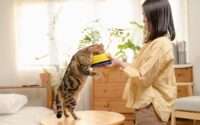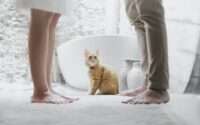Why Does My Cat Put His Paw on My Mouth? The Hidden Meanings Revealed!
Welcome to our comprehensive guide on understanding the enigmatic behaviors of our feline companions! Cats have long been a source of fascination, and one gesture that often leaves pet parents curious is when their furry friend gently places a paw on their mouth. At BarkLikeMeow, we are dedicated to shedding light on the intricacies of cat behavior, so you can better understand the language of feline affection.
Deciphering the Language of Cat Body Language
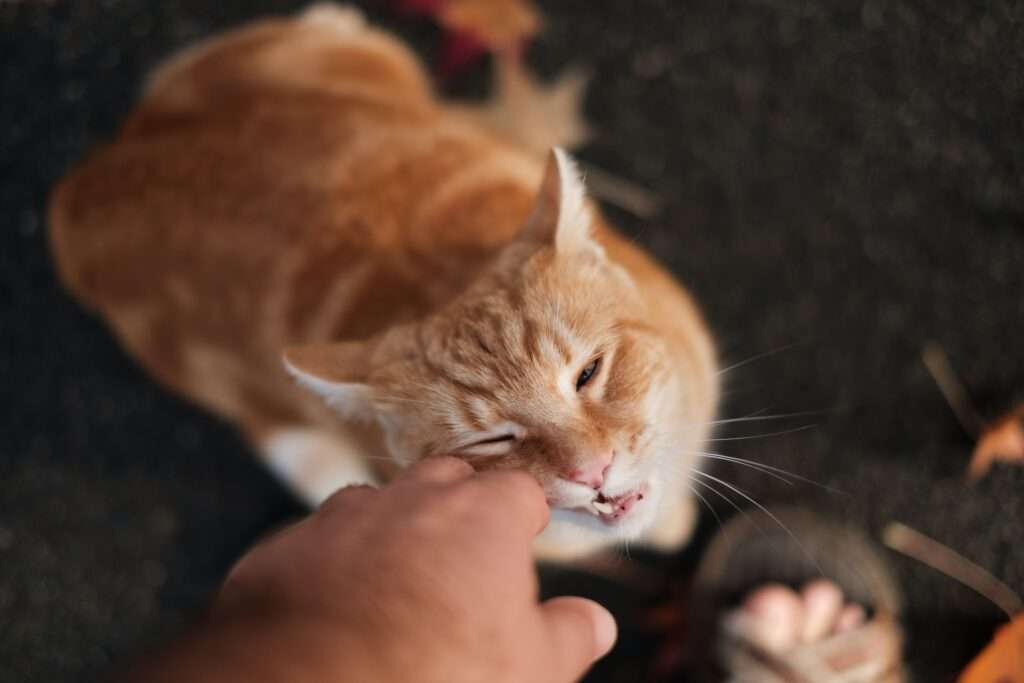
Communication is essential in every relationship, and our feline friends have their own unique way of expressing themselves. Understanding cat body language is key to deciphering their messages and strengthening the bond between you and your beloved pet.
As devoted cat enthusiasts, we know that their body language can speak volumes about their feelings and intentions. From subtle tail flicks to the charming head-butts, each gesture holds significance. Among these endearing behaviors, the act of a cat placing their paw on your mouth can be particularly intriguing.
Stay with us as we embark on an exploratory journey through the theories, emotions, and science behind why your cat puts his paw on your mouth. Together, we will delve deeper into this captivating phenomenon and uncover the true essence of your feline companion’s affectionate gestures.
Unraveling Feline Instincts and Evolution
Understanding the roots of our feline friends’ behaviors is essential in nurturing a strong and meaningful bond with them. To comprehend why your cat places his paw on your mouth, we must explore their evolutionary history and instincts.
Domestic cats may have left the wild, but they carry the legacy of their ancestors. Their social structure and communication patterns have evolved over thousands of years, shaping their present-day behaviors. By delving into the evolutionary background of these graceful creatures, we can begin to unlock the secrets behind their gestures of affection.
Theories Behind Cat Pawing on Your Mouth
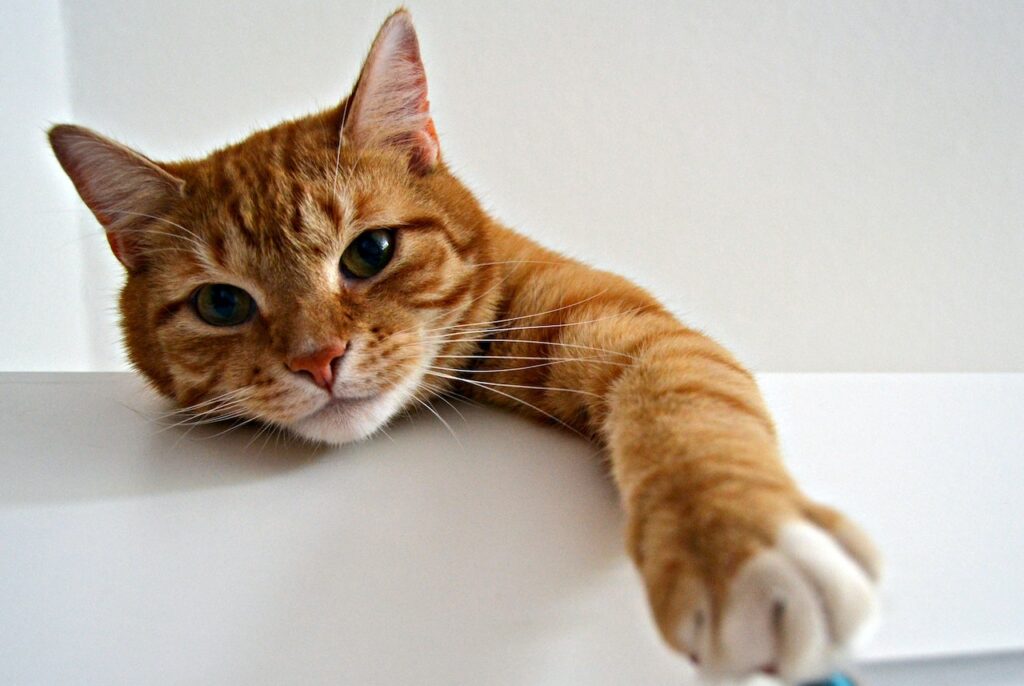
The act of your cat placing his paw on your mouth may appear mysterious, but it’s not without its share of potential explanations. As passionate pet enthusiasts, we have compiled various theories that shed light on this intriguing behavior.
- Display of Trust and Vulnerability: In the feline world, vulnerability is a display of trust. When your cat puts his paw on your mouth, he might be signaling his confidence in you. By touching your mouth, a sensitive area for humans, he shows that he feels secure in your presence.
- Request for Attention and Affection: Cats are astute in seeking attention, especially from those they hold dear. Placing a paw on your mouth may be a gentle plea for affection or a subtle reminder that it’s time for a cuddle session. Paying heed to this endearing gesture can reinforce your bond and leave both of you feeling cherished.
- Instinctual Grooming Behavior: In their natural habitat, grooming plays a vital role in maintaining social bonds among felines. When your cat places his paw on your mouth, he might be instinctively mimicking grooming behavior. This action could signify that he considers you an essential part of his social circle, akin to a surrogate family.
- Marking Territory and Ownership: Cats possess a keen sense of territoriality. Placing a paw on your mouth might be your cat’s way of marking you as part of his territory, indicating that you belong together as part of the same loving household.
- Associative Learning and Positive Reinforcement: If your cat has received positive responses to this behavior in the past, he may associate putting his paw on your mouth with favorable outcomes, such as receiving affection or treats. As a result, he might continue this endearing habit as a means of seeking rewards and connection.
By exploring these theories and considering your unique feline friend’s personality, you can gain valuable insights into the reasons behind his adorable display of affection. Stay tuned as we continue our journey to unlock more mysteries of your cat’s heart and decode his intricate language of love.
Personalizing Your Cat’s Behavior
Every cat is a unique individual with distinct preferences and quirks. Recognizing and appreciating their individuality is the key to fostering a strong bond with your feline companion. Here, we provide guidance on how to personalize your understanding of your cat’s behavior when he places his paw on your mouth.
- Observe Patterns in Your Cat’s Behavior: Take note of when your cat tends to display this endearing gesture. Does he do it during specific times of the day or in certain situations? Understanding the patterns can help you decipher the underlying motivations behind this behavior.
- Analyze the Context of Pawing: Consider the circumstances surrounding the pawing behavior. Is your cat seeking attention, expressing affection, or is there something else triggering this action? Identifying the context will enable you to respond appropriately and nurture a deeper bond.
- Acknowledge Your Cat’s Personality: Just like humans, cats have their own personalities and emotional needs. Some cats are more outgoing and affectionate, while others may be more reserved. Embrace your cat’s unique traits and respond to their gestures accordingly, ensuring a harmonious and fulfilling relationship.
Cat Body Language Decoded
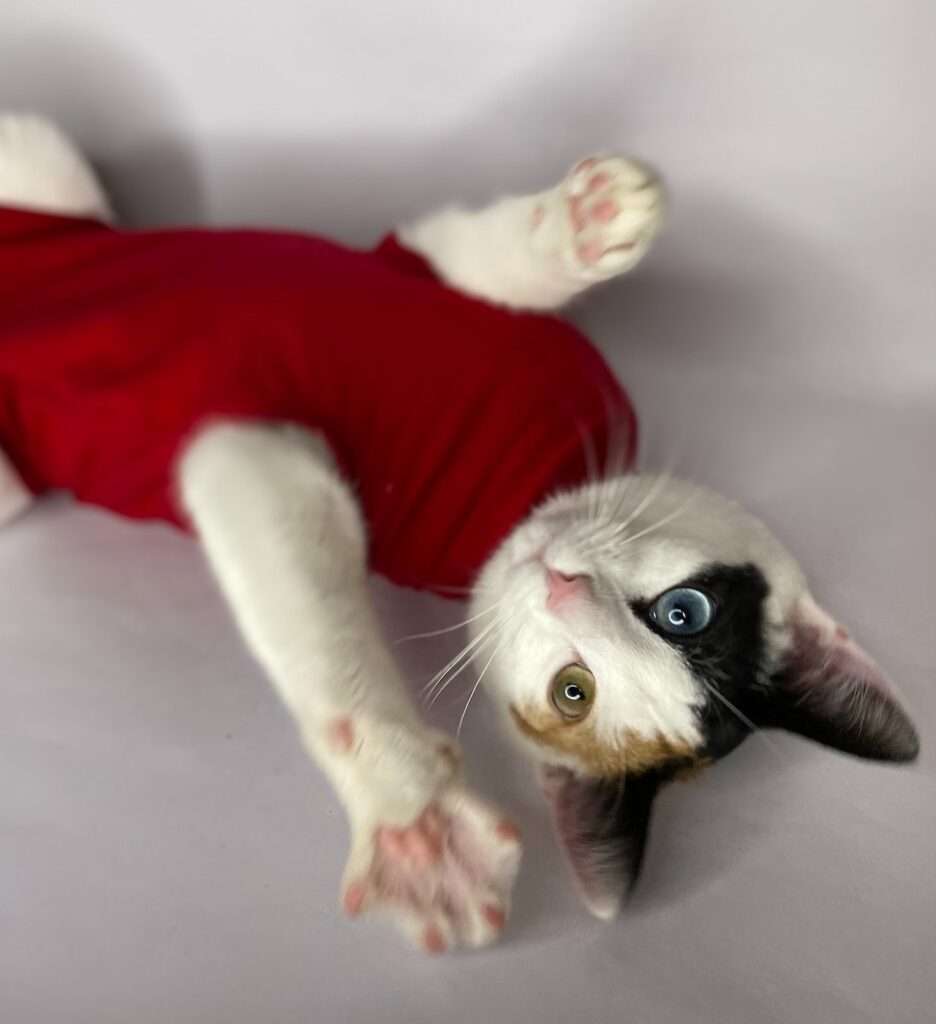
Our feline friends are skilled communicators, and their body language plays an integral role in their dialogue with us. We’ve compiled a comprehensive guide to help you grasp the nuances of cat body language, including their affectionate pawing gestures.
- Signs of Contentment and Happiness: A relaxed body posture, soft purring, and slow blinks are indicators of a happy and content cat. When your feline companion places his paw on your mouth in a gentle and non-intrusive manner, it could be a sign of trust and affection, reinforcing the loving bond you share.
- Warning Signals and Signs of Discomfort: It’s essential to recognize signs of discomfort or stress in your cat’s body language. If your cat’s ears are flattened, his tail is lashing, or he displays any signs of aggression while pawing, it could indicate he is feeling uneasy or threatened. In such instances, it’s best to give him space and observe his cues to ensure his well-being.
- Understanding Your Cat’s Emotional State: Cats are masters of subtlety, and decoding their emotions can be a rewarding experience. When your cat places his paw on your mouth, consider the context and his accompanying body language to determine his emotional state. Over time, you’ll develop a deeper understanding of his feelings, fostering a stronger connection between you both.
By becoming proficient in deciphering your cat’s body language, you’ll be better equipped to respond to his needs and emotions effectively. Remember, the more you engage with and understand your cat, the more fulfilling and gratifying your relationship will become.
Pawing and Cat-Human Bonding
As pet enthusiasts, we firmly believe that the relationship between a cat and their human companion is built on a foundation of love, trust, and understanding. When your cat places his paw on your mouth, it presents a unique opportunity to enhance your bond and deepen the connection you share.
- Strengthening the Human-Cat Bond through Touch: Touch is a powerful form of communication for both cats and humans. Embrace this tender moment when your cat places his paw on your mouth, as it signifies his willingness to engage with you intimately. Respond with gentle strokes and affectionate words to reinforce the emotional connection between you.
- How Affectionate Interactions Enhance Trust: Affectionate interactions foster a sense of security and comfort in your feline friend. When your cat expresses his affection through pawing, responding with love and attention reinforces his trust in you as a caring and reliable companion.
- Reciprocating Your Cat’s Gestures: Just as you enjoy moments of bonding with your cat, he also appreciates your gestures of love and care. Engage in interactive play, grooming sessions, and quiet cuddle time to reciprocate his affection and solidify the special bond you share.
Positive Reinforcement Training for Cats
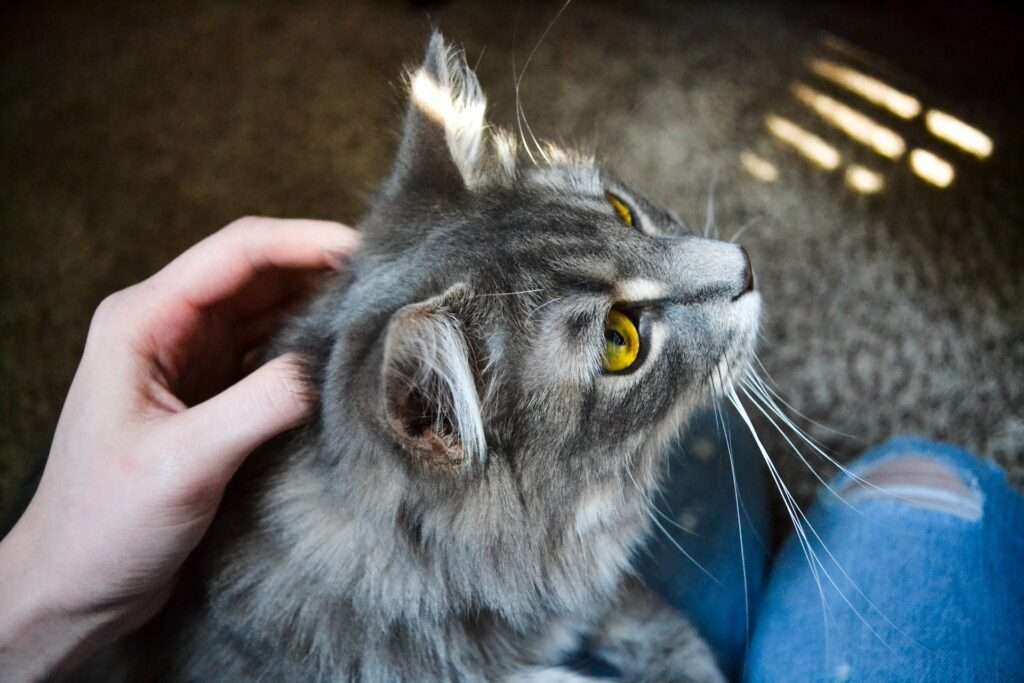
Advocating for positive reinforcement training, we emphasize its effectiveness and humane approach in shaping your cat’s behavior. By providing gentle encouragement and rewarding good behavior, you can strengthen your bond and cultivate a harmonious living environment.
- Reward-Based Training Methods: Positive reinforcement involves rewarding your cat for displaying desirable behaviors, such as using the litter box, scratching appropriate surfaces, or responding to basic commands. Use treats, verbal praise, and affectionate gestures to reinforce positive actions.
- Encouraging Desirable Behaviors: When your cat engages in behaviors you find endearing, such as pawing your mouth gently, acknowledge and reward him immediately. Positive reinforcement creates a positive association with his actions, increasing the likelihood of repeated displays of affection.
- Redirecting Unwanted Behaviors: If your cat’s pawing becomes excessive or bothersome, avoid negative reinforcement or punishment. Instead, gently redirect his attention to an appropriate behavior or provide alternative forms of interaction, such as playing with interactive toys or engaging in a grooming session.
By adopting positive reinforcement training, you can build a strong and trusting relationship with your feline companion. Remember, patience, consistency, and understanding are the cornerstones of successful training, leading to a happier and more contented cat.
Health Considerations
Understanding the importance of your furry companion’s well-being, we recognize its utmost significance. When your cat engages in unique behaviors, such as pawing your mouth, it’s crucial to consider potential health implications to ensure he remains in top-notch condition.
- Potential Medical Issues Related to Pawing Behavior: Although pawing is often a harmless and affectionate gesture, it’s crucial to rule out any underlying medical issues that may be causing discomfort or pain. Your cat’s pawing could be a subtle indicator of an ear infection, dental problem, or other health concerns. If you notice persistent or concerning behaviors, consult your veterinarian for a thorough examination.
- Signs of Discomfort or Pain in Cats: Cats are masters at masking pain, making it challenging to detect health issues. Watch out for signs such as excessive grooming, changes in appetite, lethargy, or vocalization. Addressing any health problems promptly not only ensures your cat’s well-being but also contributes to a stronger bond as he learns to trust you to care for him.
- When to Seek Veterinary Advice: As responsible pet parents, it’s essential to seek veterinary advice whenever you have concerns about your cat’s health. Your veterinarian can provide expert guidance, conduct necessary tests, and offer appropriate treatments to address any health issues that may be influencing your cat’s behavior.
Communication Strategies with Your Cat
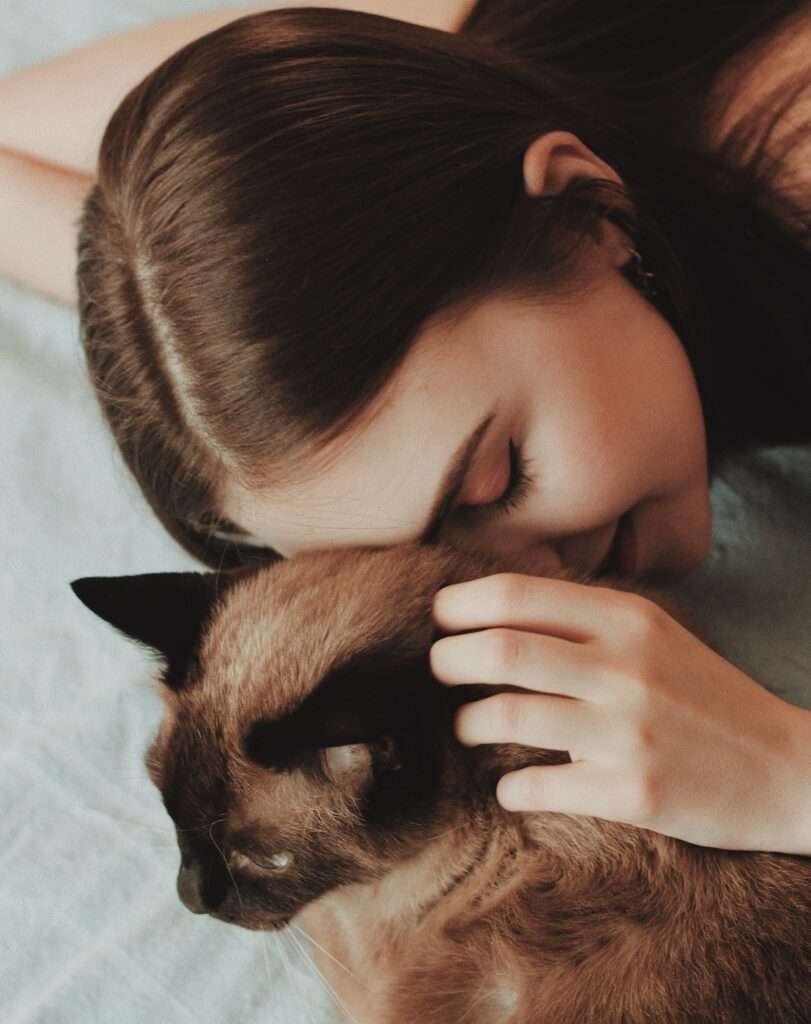
Effective communication is the heart of any successful relationship, including the one you share with your feline friend. Understanding your cat’s language and responding appropriately will nurture a deeper connection and create a harmonious living environment.
- Responding to Your Cat’s Cues Effectively: Cats communicate through vocalizations, body language, and subtle gestures. Pay close attention to his cues and respond accordingly. When your cat places his paw on your mouth, acknowledge his affectionate overture with gentle touch and soothing words.
- Learning to “Speak Cat”: Familiarize yourself with common cat body language and vocalizations. Tail positions, ear movements, and eye expressions convey valuable information about your cat’s emotions. By becoming attuned to his communication style, you can build trust and avoid misunderstandings.
- Building a Strong Bond Through Communication: Regularly engaging in interactive play, grooming, and affectionate moments solidifies the bond between you and your cat. Listen to his cues and respect his boundaries, allowing for open and trust-based communication.
By paying close attention to your cat’s communication cues and providing him with love and care, you’ll nurture a loving relationship built on trust and mutual understanding. As we proceed with our guide, we will explore additional aspects of feline behavior, fostering a deeper connection between you and your beloved furry companion.
Setting Boundaries and Respect
As responsible pet parents, setting boundaries with respect is essential in maintaining a harmonious relationship with your cat. While pawing can be endearing, it’s essential to establish guidelines to ensure both you and your feline friend feel comfortable and safe.
- Respecting Your Cat’s Personal Space: Cats value their personal space and independence. If your cat displays signs of wanting space, such as pulling away or showing avoidance, honor his boundaries and give him the needed room. This fosters a sense of trust, as he knows he can count on you to respect his boundaries.
- Teaching Appropriate Behavior through Boundaries: Use positive reinforcement to encourage appropriate behavior and gently redirect any unwanted pawing. For instance, if your cat tends to be overenthusiastic during playtime, pause the play session when he displays excessive pawing and only resume once he’s calmer.
- Ensuring a Happy and Stress-Free Environment: Create an environment that promotes your cat’s physical and emotional well-being. Providing ample enrichment, such as interactive toys, scratching posts, and cozy hideaways, helps reduce stress and redirects any anxious behaviors.
Alternative Forms of Cat Affection
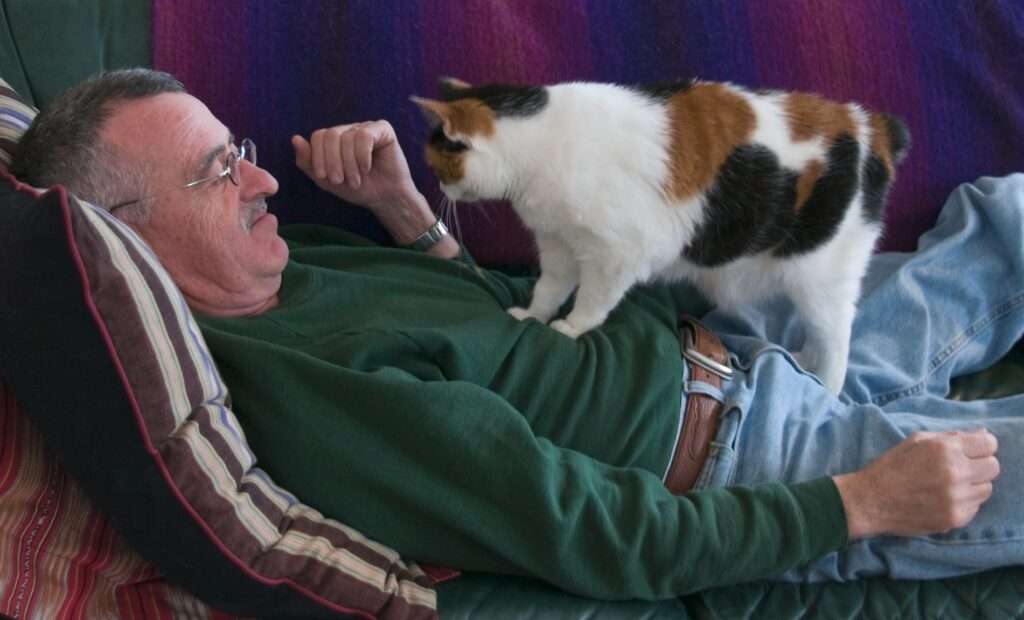
Cats express affection in various ways, and understanding their unique preferences contributes to a deeper bond between you and your feline companion. Beyond pawing, there are numerous charming ways cats show their love.
- Gentle Head-Butting: A gentle head-butt, also known as a “cat kiss,” is a heartwarming gesture of love and trust. When your cat initiates a head-butt, respond with affectionate strokes to reciprocate his feelings.
- Purring and Kneading: The soothing sound of a cat’s purr is a delightful expression of contentment and relaxation. When your cat kneads his paws against you, it hearkens back to kittenhood when kneading was a comforting nursing behavior.
- Gifting “Presents”: Finding small gifts from your cat, such as toys or even the occasional prey (if he’s an outdoor cat), is a sign of affection. Though it may seem unusual to us, it’s his way of showing love and appreciation.
Embracing these alternative forms of affection enhances your understanding of your cat’s unique communication style. Cherish these moments and reciprocate their love in ways that resonate with their individual personalities.
Cat Pawing in Different Contexts
Understanding the various contexts in which your cat engages in pawing behavior provides valuable insights into his intentions and emotions. Delving into different scenarios where pawing may occur and what it signifies allows us to gain a deeper understanding of our feline companions.
- Pawing During Playtime: During play sessions, your cat’s excitement may lead to pawing as a way to engage with you. It demonstrates his enthusiasm and eagerness to interact, creating joyful moments of bonding between you both.
- Pawing for Attention During Mealtimes: Cats are clever communicators, and if your feline friend playfully paws at your mouth during mealtimes, he may simply be seeking your attention or even expressing his desire for a tasty treat. This endearing behavior can make mealtime a shared and enjoyable experience.
- Pawing as a Response to Stress or Change: Cats are sensitive beings, and changes in their environment or routines can lead to stress or anxiety. Pawing during such times may be a coping mechanism or a request for reassurance. Offering comfort and a calm environment can help alleviate his stress.
By observing the specific contexts in which your cat engages in pawing, you’ll gain valuable insights into his emotional state and be better equipped to respond with love and understanding.
Cats and Children: Safety and Interaction
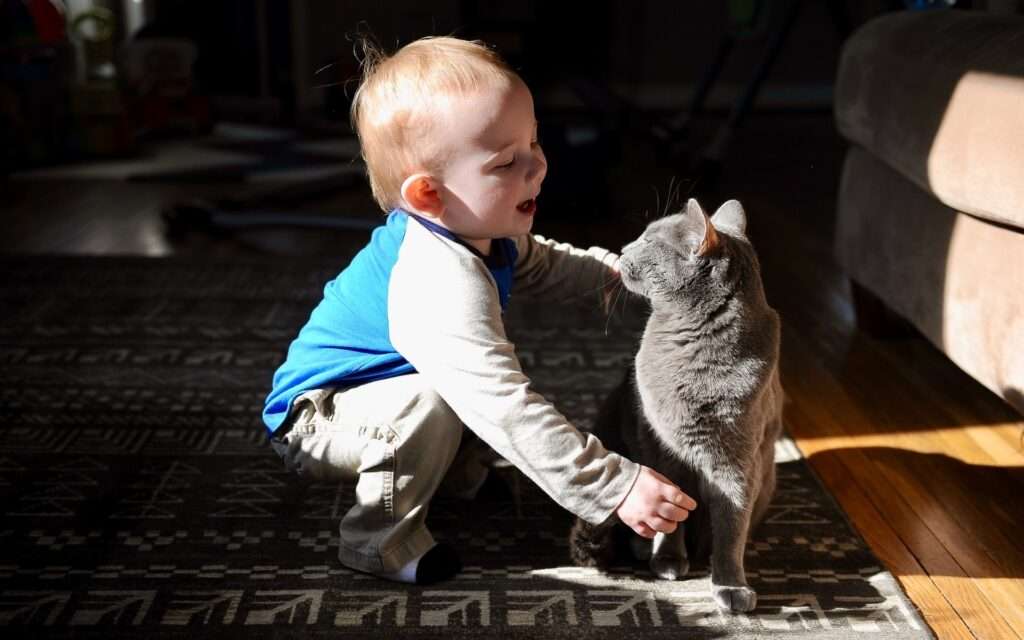
For families with children and cats, fostering a safe and positive relationship between the two is paramount. We offer guidelines for creating a harmonious environment where children and cats can coexist happily.
- Educating Children About Cat Behavior: Teaching children about feline body language and behavior is crucial for their safety and the well-being of your cat. Encourage gentle interactions and demonstrate appropriate ways to engage with your feline friend.
- Safe Interactions Between Cats and Kids: Supervise interactions between cats and young children to ensure gentle handling and prevent accidental rough play. This ensures a positive experience for both the child and the cat, nurturing a bond built on trust and respect.
- Importance of Supervised Playtime: Supervised playtime allows children to bond with their feline friend while ensuring the cat’s comfort and safety. Encourage interactive play with toys to minimize the risk of unintentional pawing or scratching.
By promoting safe and respectful interactions between children and cats, you create a loving environment where both can thrive, fostering a lifelong bond that is filled with joy and companionship.
When Pawing Becomes a Problem
While cat pawing is often an endearing gesture, there are instances when it may become problematic. Addressing such behaviors with patience and understanding, we believe in seeking solutions that nurture a healthy relationship between you and your feline companion.
- Addressing Excessive Pawing: If your cat’s pawing becomes excessive or intrusive, it may be a sign of overstimulation, stress, or an attempt to get your attention. Identifying the underlying cause is crucial in finding appropriate solutions.
- Possible Behavioral Issues and Solutions: Excessive pawing may be linked to underlying behavioral issues, such as anxiety, boredom, or attention-seeking. Working with a professional animal behaviorist can help identify the root cause and develop a tailored plan to address the behavior positively.
- Seeking Professional Assistance if Needed: If you find yourself struggling to address your cat’s pawing behavior or any other challenging issues, don’t hesitate to seek professional assistance. Qualified veterinarians and animal behaviorists can provide expert guidance to ensure your cat’s well-being and strengthen your bond.
Advocating for compassionate and gentle methods of addressing behavioral challenges, we prioritize your cat’s happiness and aim to foster a loving relationship that lasts a lifetime.
Conclusion
In the enigmatic world of feline behavior, understanding the language of cat affection, including pawing, opens the door to a deeper and more meaningful bond between you and your cherished feline friend. At BarkLikeMeow, our mission is to provide you with the knowledge and insights to cultivate a loving and harmonious relationship with your cat.
From decoding feline instincts and evolutionary roots to navigating positive reinforcement training, health considerations, and safe interactions with children, we’ve explored a wide array of topics related to your cat’s pawing behavior. By embracing the mysteries and joys of cat-human relationships, you’ve embarked on a rewarding journey of companionship and mutual understanding.
Remember, every cat is a unique individual, and observing their body language, responding to their cues, and setting boundaries with respect will guide you in nurturing a bond built on trust, affection, and love. With patience, consistency, and unwavering devotion, your feline companion will thrive as an integral part of your family.
Frequently Asked Questions
Q: Why does my cat put his paw on my mouth?
A: Your cat’s pawing behavior is a form of communication and affection. It can signal trust, a request for attention, or even mimic grooming behavior.
Q: Is pawing my mouth a sign of love from my cat?
A: Yes, placing a paw on your mouth is often a sign of love and affection. Cats use this gesture to show trust and create a closer bond with their human companions.
Q: Should I be concerned if my cat paws my mouth excessively?
A: While occasional pawing is normal, excessive behavior could indicate underlying issues. Monitor your cat’s overall health, stress levels, and consult a veterinarian if needed.
Q: How can I respond to my cat’s pawing in a positive way?
A: Respond with gentle affection, strokes, and verbal reassurance. Positive reinforcement for this behavior can strengthen the bond between you and your cat.
Q: Are there other ways my cat shows affection?
A: Absolutely! Cats have various ways of expressing love, including head-butting, purring, kneading, and gift-giving. Understanding these cues deepens your connection.
Q: How can I set boundaries while still showing affection to my cat?
A: Respect your cat’s personal space and preferences. If pawing becomes excessive, gently redirect their attention to appropriate behaviors, rewarding positive actions.
Q: Can children safely interact with a cat that paws their mouth?
A: Supervised interactions are key. Teach children to handle cats gently and respect their boundaries, ensuring a safe and enjoyable experience for both.
Q: Is positive reinforcement training effective for curbing pawing behavior?
A: Yes, positive reinforcement can redirect and shape behavior. Rewarding your cat for desired actions helps create a harmonious environment.
Q: When should I seek professional assistance for my cat’s behavior?
A: If your cat’s pawing or other behaviors become problematic or distressing, consulting a veterinarian or animal behaviorist can provide expert guidance.
Q: How can I strengthen the bond with my cat beyond pawing behavior?
A: Engage in play, interactive grooming, and spend quality time together. Understanding their unique preferences and communicating effectively fosters a deeper connection.




